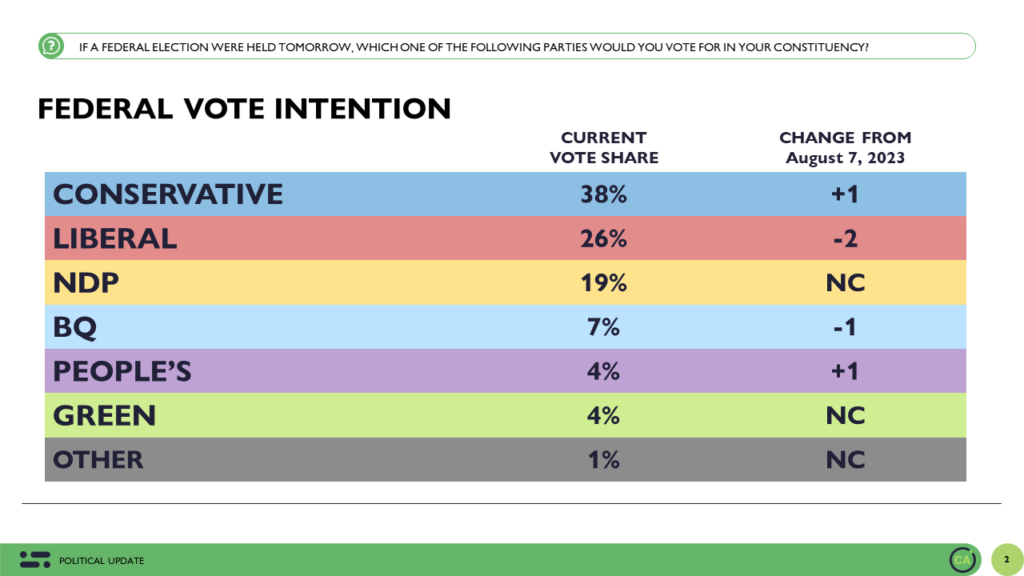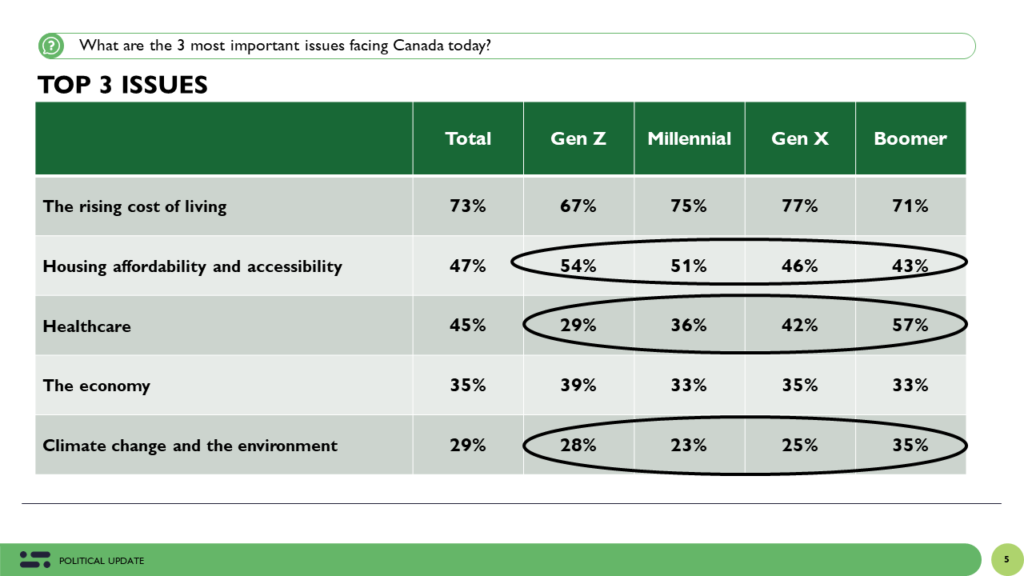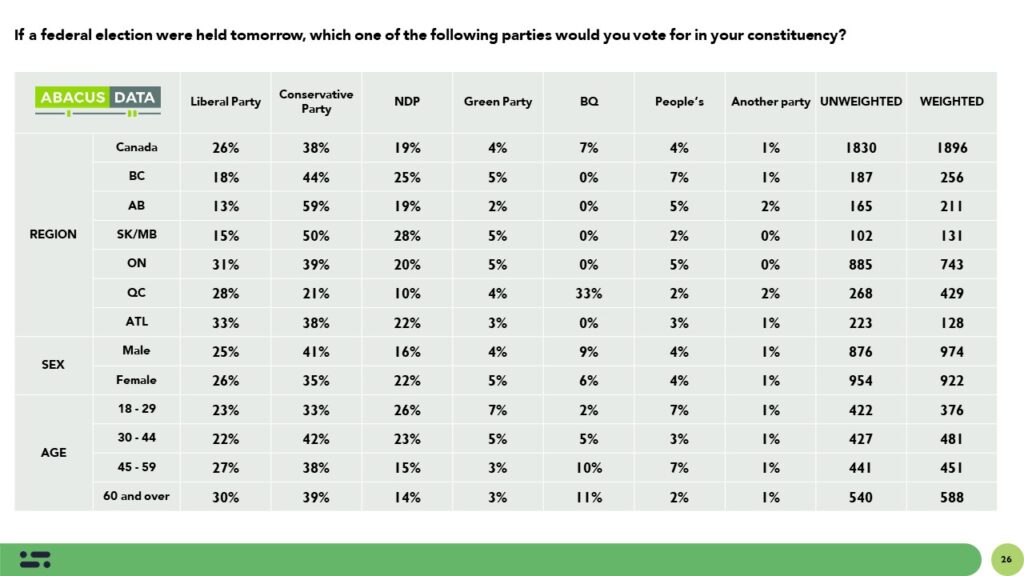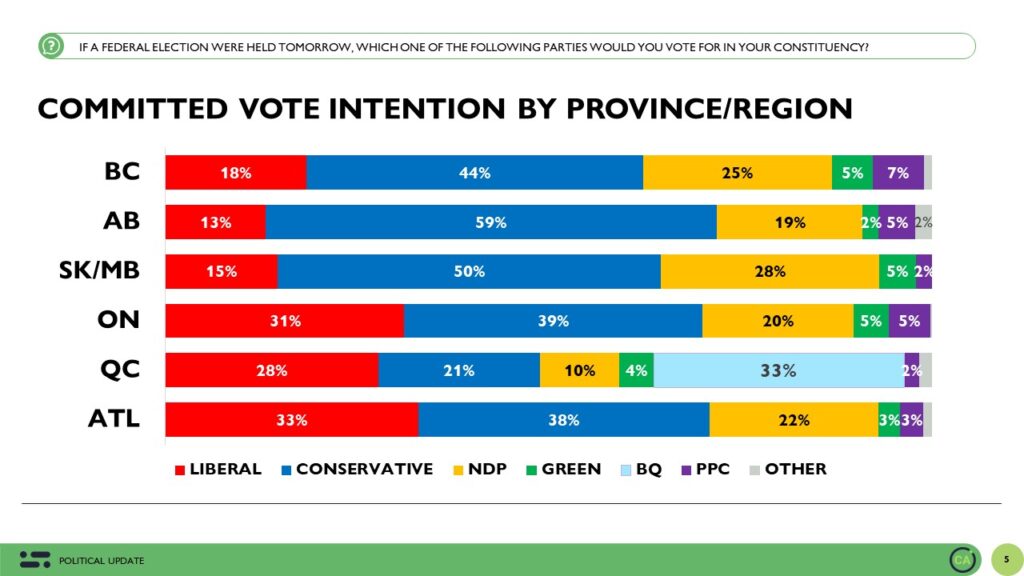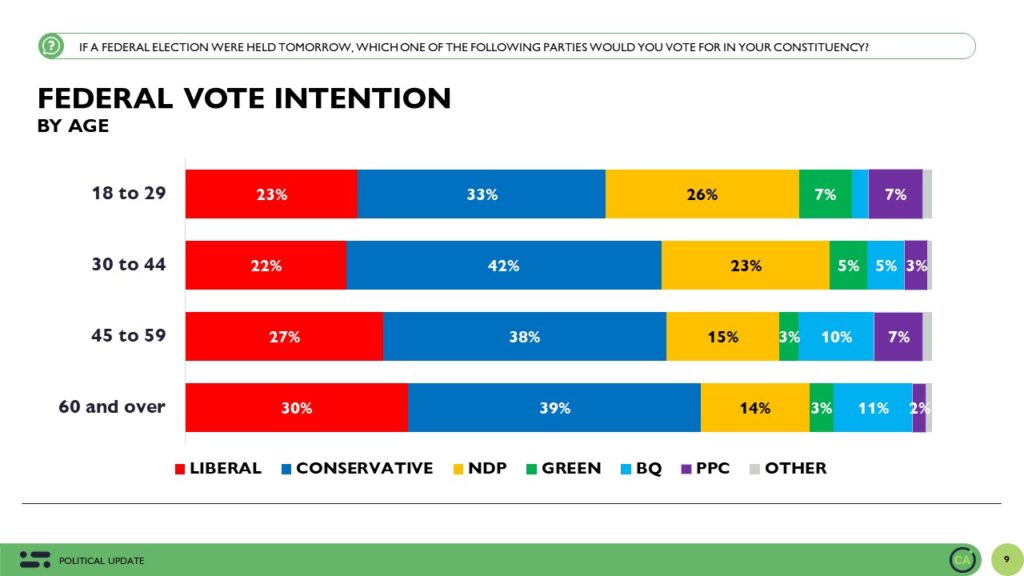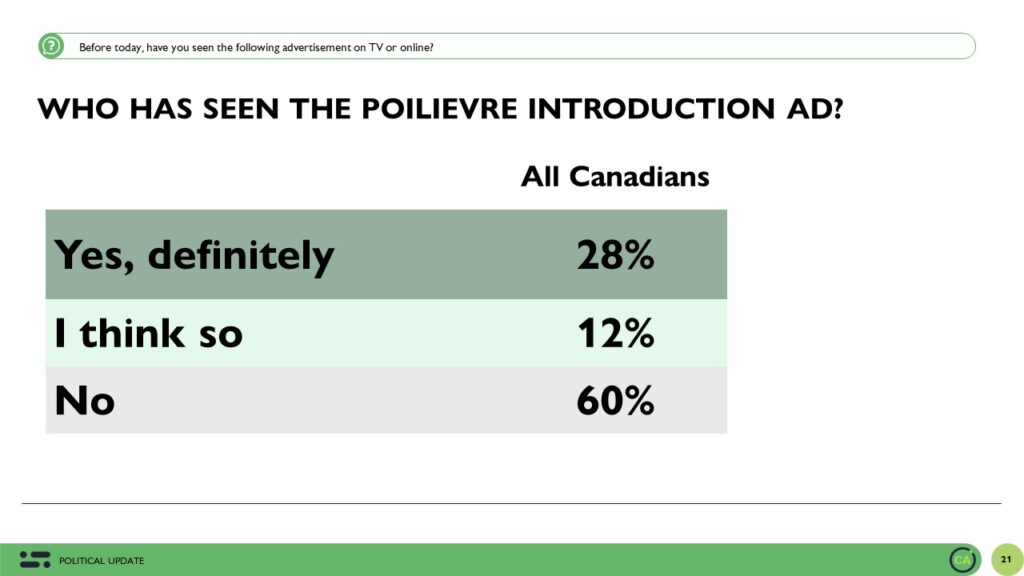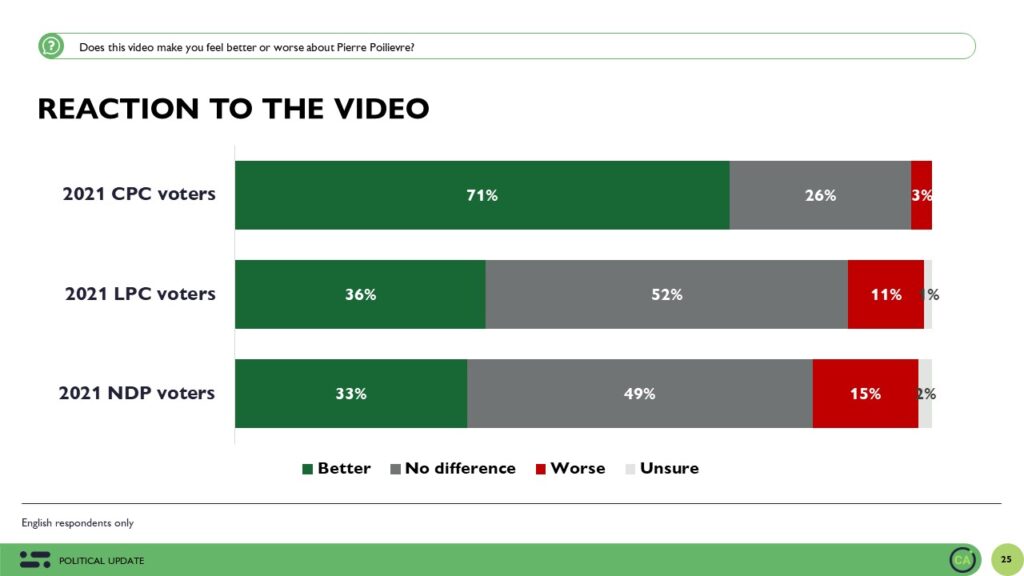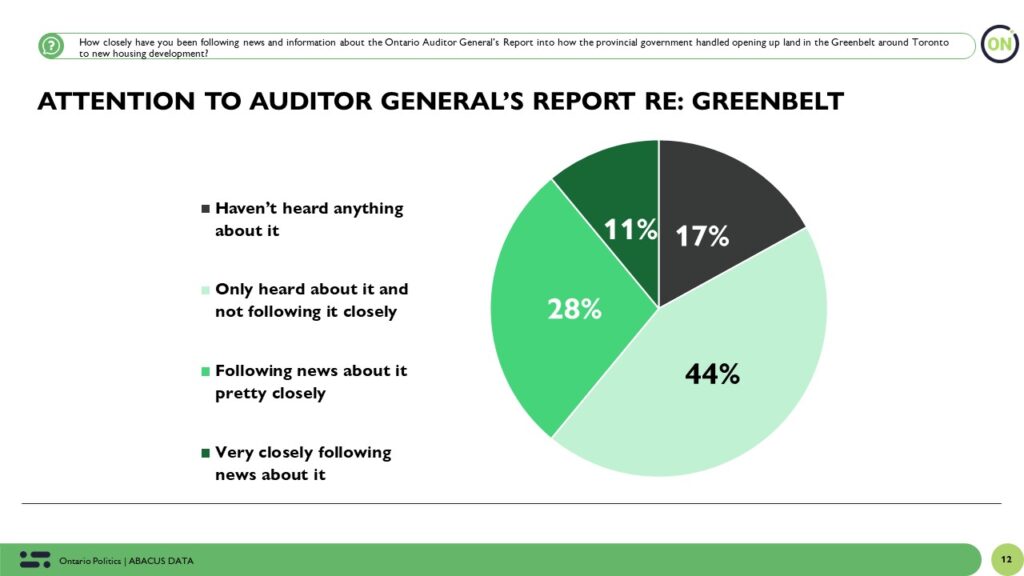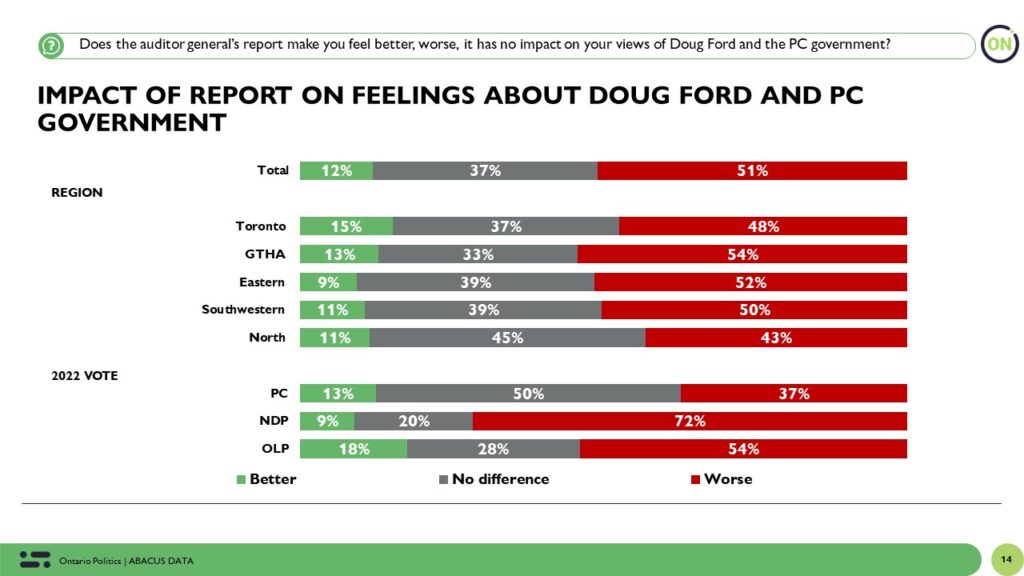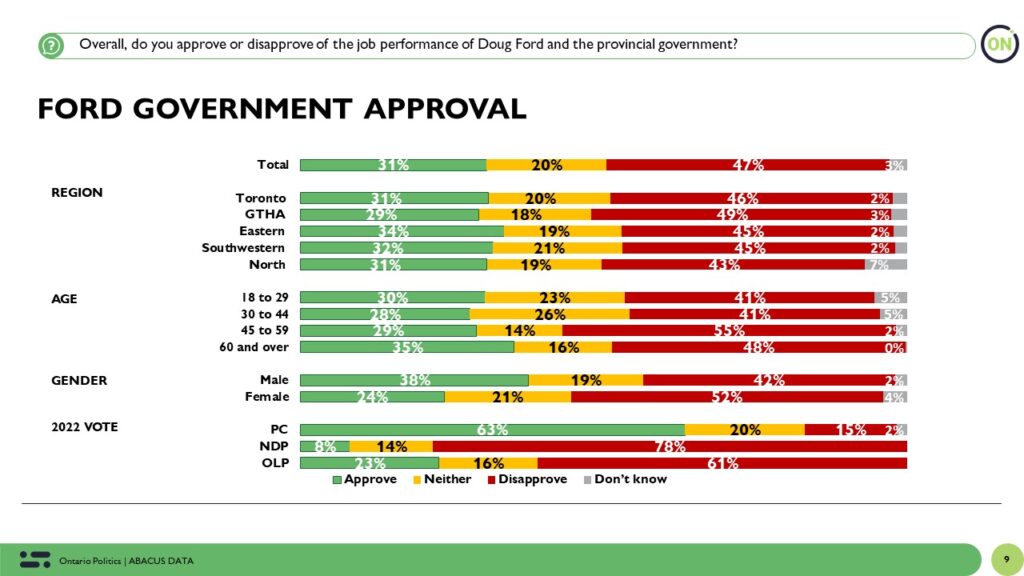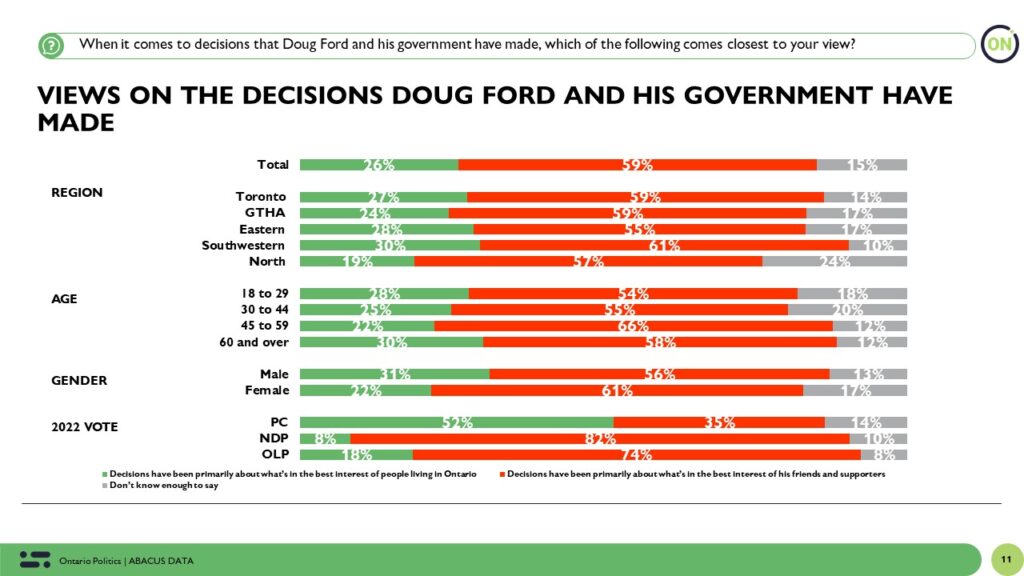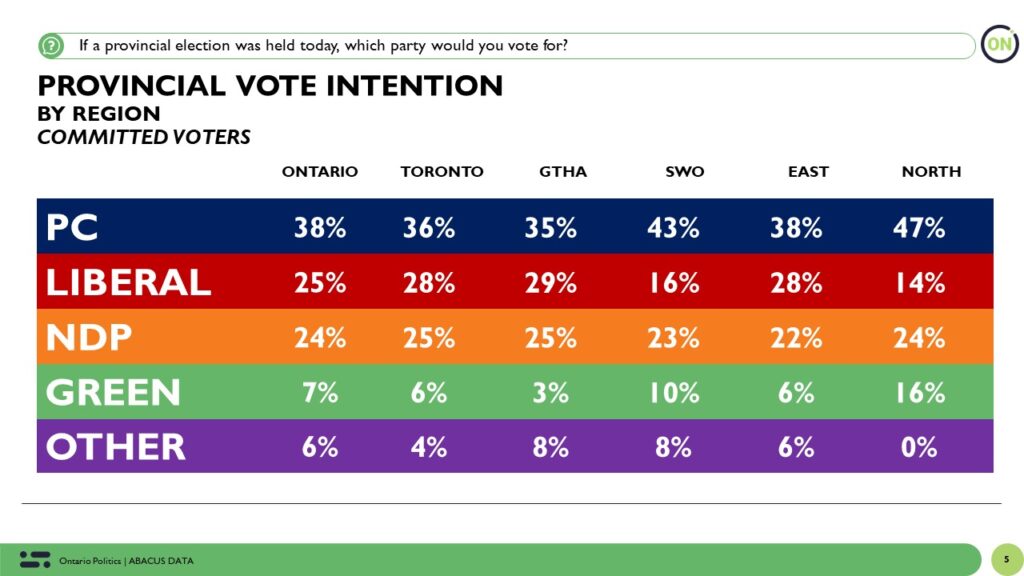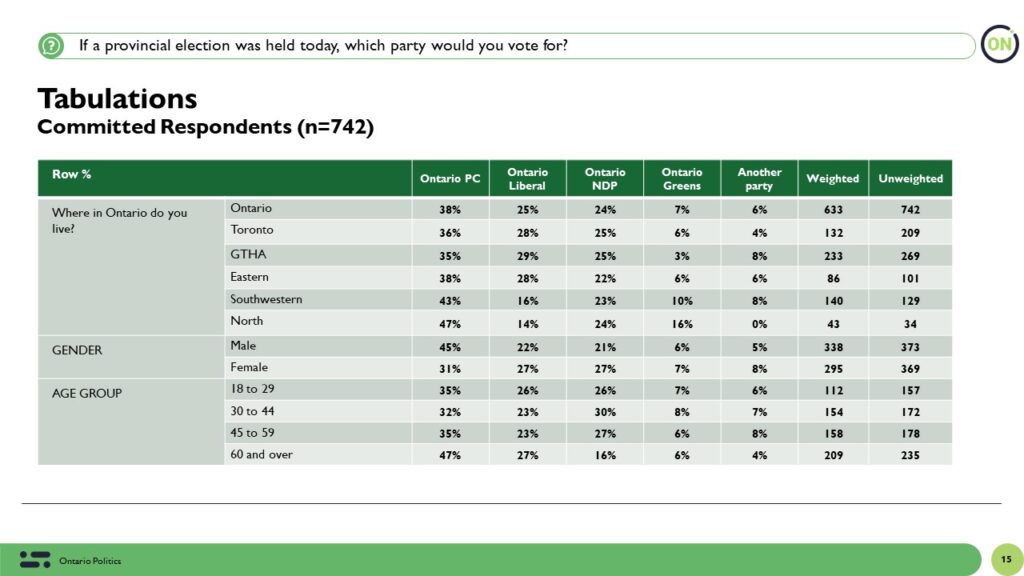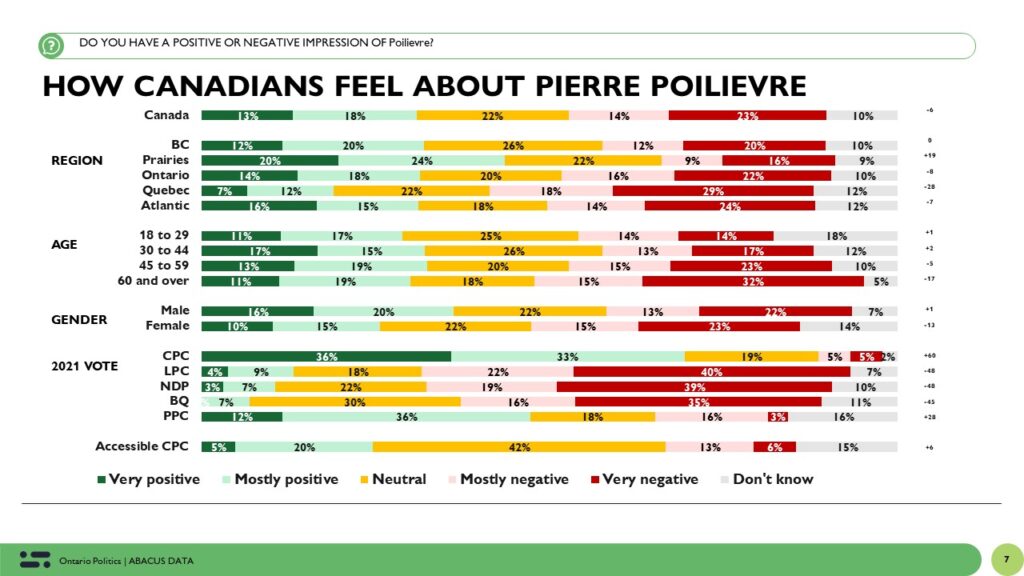Ford’s PCs down 7-points since the end of July as the Greenbelt scandal bites
In partnership with the Toronto Star, we conducted a survey of 2,003 eligible voters in Ontario from August 29 to September 4, 2023 to measure the impact of the Greenbelt scandal on support for the Ontario PCs and the Ford government. Most of this survey was completed before news of Housing Minister Steve Clark’s resignation yesterday.
The survey finds that support for the PCs has dropped 4-points in just over a week from 38% to 34% and by 7-points since the end of July (41% to 34%). The Liberals are up 3-points to 28% while the NDP is up 2-points to 26%.

This is the lowest level of support we’ve measured for the Ontario PCs since the last provincial election.

Regionally, there’s a three-way tie in Toronto, the PCs are ahead by 7 in the GTHA, and the PCs and NDP are tied in southwestern ONtario. The PCs are ahead in the East while the Liberals are likely slightly ahead in the North, although a very small sample size in that region makes it hard to know confidentially what is happening.

Because we had a larger sample in the Greater Toronto Area, we could also break out results by region around Toronto. The PCs are slightly ahead in Durham Region, trail the Liberals in Halton and Milton, and are tied with the Liberals in Peel (Mississauga, Brampton, and Caledon). The PCs are ahead in York Region.

Demographically, the PCs are ahead by 12-points among men, are tied with the NDP and Liberals among women, and do far better among older voters than younger ones.

Comparing current vote intention with past voting behaviour, we find the PCs are holding onto 83% of its past support with the 17% splitting almost evenly across the opposition parties. The NDP is holding onto 84% of its support while the Liberals are holding onto 76% of its past support. No opposition party has really gained from the drop in PC support.
The Upshot
The Greenbelt scandal has very likely hurt support for the PCs. We will need to explore other measures in the coming weeks to see to what extent it has impacted people’s views of the government and the premier but a 7-point drop in support over the summer is significant. Whether this is the end to the bleeding remains to be seen. But so far, the PCs are in their weakest position since the resounding re-election in June 2022.
Methodology
The survey was conducted with 2,003 eligible voters in Ontario adults from August 29 to September 4, 2023. A random sample of panelists were invited to complete the survey from a set of partner panels based on the Lucid exchange platform. These partners are typically double opt-in survey panels, blended to manage out potential skews in the data from a single source.
The margin of error for a comparable probability-based random sample of the same size is +/- 2.2%, 19 times out of 20.
The data were weighted according to census data to ensure that the sample matched Ontario’s population according to age, gender, educational attainment, and region. Totals may not add up to 100 due to rounding.
This survey was paid for by Abacus Data Inc.
Abacus Data follows the CRIC Public Opinion Research Standards and Disclosure Requirements that can be found here: https://canadianresearchinsightscouncil.ca/standards/

ABOUT ABACUS DATA
We are the only research and strategy firm that helps organizations respond to the disruptive risks and opportunities in a world where demographics and technology are changing more quickly than ever.
We are an innovative, fast-growing public opinion and marketing research consultancy. We use the latest technology, sound science, and deep experience to generate top-flight research-based advice to our clients. We offer global research capacity with a strong focus on customer service, attention to detail, and exceptional value.
We were one of the most accurate pollsters conducting research during the 2021 Canadian election following up on our outstanding record in 2019.
Contact us with any questions.
Find out more about how we can help your organization by downloading our corporate profile and service offering.
